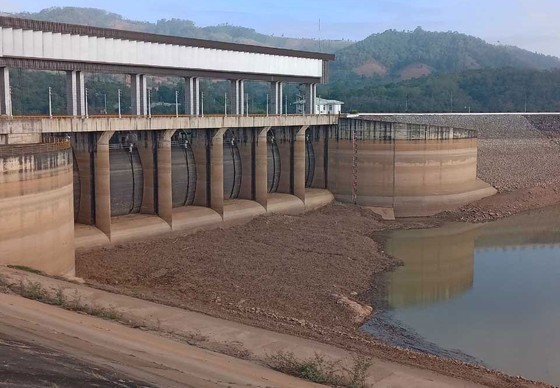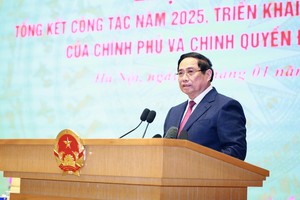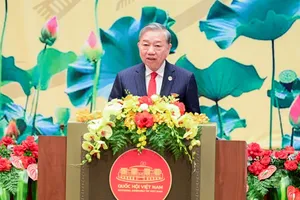 |
Heatwaves and scanty rainfall result in low water levels in hydropower dams |
The Electricity of Vietnam (EVN) yesterday informed that in the first four months of the year, the water flow to hydropower reservoirs in the North was only 60-70 percent of the average of many years. Many hydroelectric reservoirs in the Central and Southern regions also have dried up. By early May 2023, many hydroelectric reservoirs had reached low water levels, threatening to cause electricity shortages in the near future.
Specifically, EVN’s 10 hydropower reservoirs including Lai Chau, Tri An, Ialy, Ban Chat, Huoi Quang, Trung Son, Buon Kuop, Buon Tua Srah, Srepok 3 and Ba Ha River and many hydropower reservoirs owned by other investors have dropped to or below the dead-pool level – the point at which water won't flow freely through the dam and generate power. Up to now, the remaining output in the reservoirs of the hydroelectric system has only reached 4.5 billion kWh, 1.6 billion kWh lower than the plan and 4.1 billion kWh lower than the same period in 2022.
From the beginning of 2023 up to now, in the North, there have only been 1-2 heavy rains with the rainfall of only around 100mm. Many places are suffering from drought.
According to the National Center for Hydro-meteorological Forecasting, the El Nino phenomenon occurs from about June or July and lasts until the beginning of 2024 coupled with hot weather, high temperature, and low rainfall. According to EVN, if this situation persists, the water flow to hydropower reservoirs will continue decreasing in the coming time.
Hot weather means that the demand for electricity will increase. Through monitoring the operation of the national power system, although the intense heat wave in early May 2023 only lasted for a few days in the North, the electricity consumption output of the North and the country went very high.
Typically, on May 6, the nationwide electricty consumption capacity reached over 43,300MW and the consumption output also increased to more than 895 million kWh. It is forecasted that the national electricity system's load in May, June and July will increase higher than the national electricity system operation plan approved by the Ministry of Industry and Trade.
EVN calculated that during the hot summer months of 2023, extreme situations may occur such as the maximum capacity (Pmax) in the North growing by 15 percent compared to the same period in 2022 during prolonged hot days and the deeply dropping water level in large hydropower reservoirs.
At that time, the Northern electricity system will face difficulties in power supply in May and June, especially during peak electricity consumption hours. If drought keeps hitting the country without flood or low rainfall, the power supply may continue to be difficult in the following months.
In order to cope with the risk of power shortage, EVN continues to ask people to thoroughly save electricity, especially during peak hours at noon and in the evening. People should not use many electrical appliances with large capacities at the same time.
Economic experts also suggested that people use electricity more efficiently with equipment and machinery that consume less energy in the context that the electricity price has just been adjusted up by 3 percent from May 4, to prevent electricity bills from hiking.
The National Load Dispatch Center and power companies in the Northern region said that they will make electricity supply plans every month, especially during the peak months of heat from May to August; and at the same time, businesses and large production facilities should be informed so that they can adjust production activities, avoiding damage caused by power failures.
























